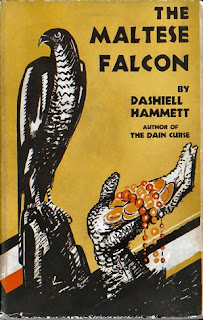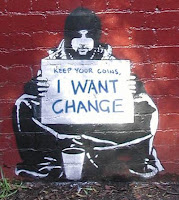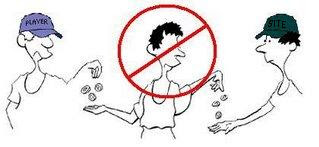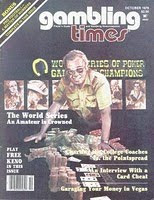NAPT Venetian Postscript
 Made it back home safely yesterday afternoon. Quick flight, it seemed. Still amazes me how common it is for folks to wake up in one place and later that afternoon be 2,000 miles away. I’m simple that way. Easily amazed.
Made it back home safely yesterday afternoon. Quick flight, it seemed. Still amazes me how common it is for folks to wake up in one place and later that afternoon be 2,000 miles away. I’m simple that way. Easily amazed. Got home and was very glad to be back with Vera and enjoy a quiet evening together. Had every intention to sit up and watch some Olympics -- which I’ve lost track of over the past week -- but zonked out by nine o’clock and slept ten straight hours. Needed that after averaging four or so over the last few nights.
Had kind of an interesting postscript to that final table of the NAPT Venetian event I was discussing last post. After watching Sam Stein enjoy the chip lead for the entire final table, Tom Marchese grabbed it away from him in a surprising hand during heads up, and then won the tourney shortly thereafter in a hand that involved another curious call from Stein.
You can see yesterday’s post for details of those last hands. If you do, you’ll see a comment from someone who viewed the NAPT.com streaming broadcast of the final table noting how Stein did not intend to show his hand in the one in which Marchese took over the chip lead. Rather, after he’d mucked face down, the dealer had flipped it over -- that’s when we all saw it on the overhead monitor and the announcer confirmed that yes, Stein called the all-in bet with just fourth pair.
Those NAPT live broadcasts -- like the EPT ones -- are terrific fun for poker players. You get to see all of the hands at final tables (sans hole cards, of course). They also often will start showing action once the tourney gets down to three tables or so, with a feature table and secondary tables, if logistics allow it. For example, I don’t believe the NAPT Venetian Main Event was covered until that final table, but I know at EPT Kyiv they started broadcasting with at least three tables left.
As I mention in my response to the comment, we weren’t watching the NAPT.com stream Wednesday night. The images projected above the table were those being shot by the crew taking footage for the eventual ESPN2 broadcast of this Main Event final table, set to air on April 26th. And even though we were sitting just a few feet away from the table, those cameramen, constantly rotating around the table, were between us and the action, thereby obscuring from us the fact that the dealer had flipped Stein’s hand. Will definitely make watching that final table more interesting -- and we’ve only a couple of months to wait!
Two other items to share before signing off today. That episode of Lou Krieger’s podcast “Keep Flopping Aces” on which I appeared (2/18/10) is now available for download either via iTunes or from the Rounders website. I’m writing up some of the latter half of the conversation for a Betfair piece that should appear soon, perhaps today if I can manage it. (EDIT [added 2/27/10]: The interview on Betfair is now posted -- click here to read.)
Also, I might be turning up briefly on the next episode of ESPN’s Inside Deal in a segment where people ask questions of Daniel Negreanu. Show host Andrew Feldman rounded up a few of us Wednesday night to participate, and I came up with a question to ask. Dunno if it’ll be used or not, but I’ll be keeping an eye on the Inside Deal page to see if perhaps it was.
Great fun to travel and especially to reconnect with the many poker people with whom I’ve gotten to work, as well as those working for other media outlets that I worked alongside. Big thanks again to Brad, Jen, and Joe for a fun week, to Macon Marc Hodge with whom I got to work one night, to Donnie, F-Train, and all the PokerNews guys, to Mad Harper and Garry Gates of the NAPT, and to everyone else for all of the added support.
But it’s good to be home, too. Think I’ll be sticking within my usual 25-mile radius of activity here for the next few weeks. Have a good weekend all.
As were the photos in yesterday's post, the one above is by Joe Giron. Check out his website for more cool poker & music pics.
Labels: *high society, NAPT Venetian





 , and Stein thought for about 15 seconds before calling with just
, and Stein thought for about 15 seconds before calling with just 
 . Marchese only had
. Marchese only had 
 for top pair, but he was good.
for top pair, but he was good.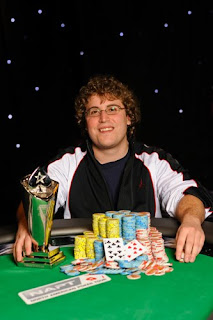



 and betting on previous streets had gotten Stein down to a small stack. This time he tanked for some time, then called with
and betting on previous streets had gotten Stein down to a small stack. This time he tanked for some time, then called with  . Marchese flipped over pocket tens for a set on the end, and suddenly we were done. Marchese had won the trophy, and the $827,648 that went along with it.
. Marchese flipped over pocket tens for a set on the end, and suddenly we were done. Marchese had won the trophy, and the $827,648 that went along with it.













